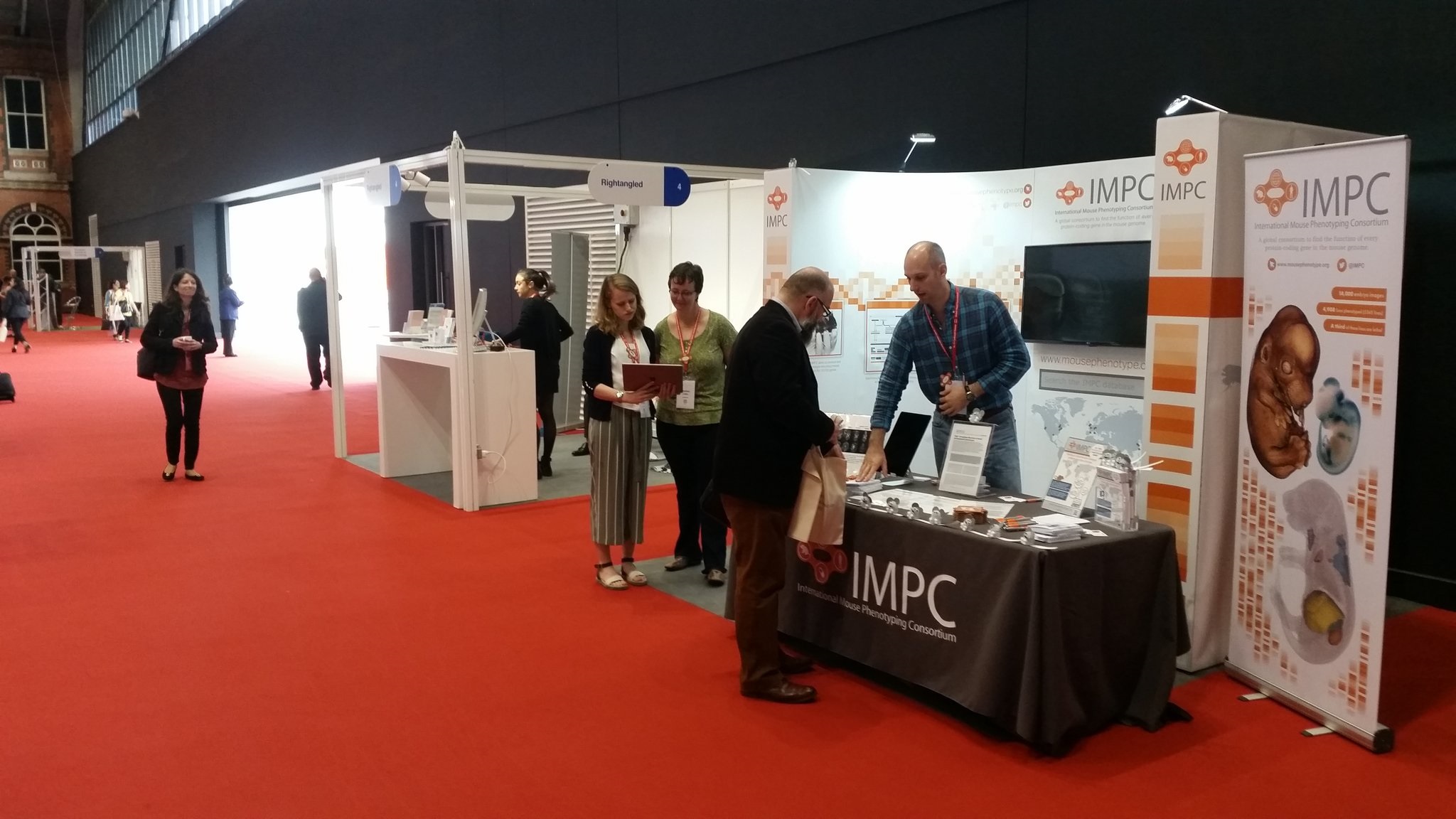We are excited to be attending the the ASHG 2018 Annual Meeting in San Diego next week. We are looking forward to engaging with researchers and to raise awareness of the IMPC as a resource. If you are attending the conference and want to learn more about the IMPC please visit stand 225 in the non-profit section of the exhibition hall. We will be tweeting relevant research and news during the conference so please follow us on Twitter for updates. We are also adding guest blog posts from attendees presenting research that utilize mouse models, click here to read them.
As well as documentation and information about the latest research , we will also be giving out coasters, pens, notebooks and toy mice. Please don’t hesitate to come to our stand if you are interested in hearing more about the IMPC or if you want to pick up some handouts. Pilar Cacheiro and Damian Smedley will also be presenting research that mentions IMPC resources, both on Wednesday the 17th, and we will have copies of the poster on the stand. More information on the aims and uses of IMPC can be found below.

The International Mouse Phenotyping Consortium (IMPC) is an international effort to identify the function of every gene in the mouse genome. The entire genome of many species has now been published and whole genome sequencing is becoming relatively quick and cheap to complete. Despite these advancements the function of the majority of genes remains unknown.
This is where the IMPC comes in, with the goal of phenotyping all 20,000 or so protein coding mouse genes. To achieve this, genes in the mouse genome are switched off then standardised physiological tests undertaken across a range of biological systems. This data is then made freely available to the research community. As well as completing large scale comparative studies, the overall aim of the project is to create a platform for this data where researchers/clinicians can search for genes or diseases of interest to help them understand human health and disease.
IMPC data can be used in a variety of ways, such as to investigate basic biology mechanisms that can lead to new therapeutic targets or to narrow down a suspected list of genes in patients. In the last few years the IMPC have made major discoveries in parts of the genome that were hitherto unexplored, with new genes discovered relating to areas such as deafness, diabetes, and rare diseases. Summaries of five recent research articles that highlight the diversity of how IMPC data can be used are listed below. These include inferring mammalian gene function, studies on specific human conditions, sex differences in medical research, and even using IMPC data to help in wildlife conservation.
- Advancements in mouse phenomics and its uses for inferring mammalian gene function
- Novel hearing loss genes identified in large study by scientists across the world
- New diabetes genes discovered in latest IMPC research
- Study of unprecedented size reveals how sex ‘blindspot’ could misdirect medical research
- New research suggests laboratory mouse data can help in wildlife conservation

